
Nokia OSPF Routing Protocol Exam
Last Update Jan 14, 2026
Total Questions : 104
We are offering FREE 4A0-113 Nokia exam questions. All you do is to just go and sign up. Give your details, prepare 4A0-113 free exam questions and then go for complete pool of Nokia OSPF Routing Protocol Exam test questions that will help you more.



What must be configured on the Nokia 7750 SR for RIP to advertise locally attached links?
If OSPF is used in a multi-area OSPF network, which of the following statements regarding route summarization is true?
Which of the following types of networks are supported on a Nokia 7750 SR for OSPF? Choose two answers.
A static route is created using the command "static-route 2.3.4.0/24 next-hop 1.2.3.4". What is the correct traceroute command to test this static route on a Nokia 7750 SR?
Which of the following statements regarding OSPF routing updates on a point-to-point link is true?
What is the default priority value used for electing the DR on an Nokia 7750 SR running OSPF on an Ethernet?
What are the default Hello and Dead timer intervals for OSPF on the Nokia 7750 SR?
Which of the LSA types stay within an OSPF area and are not exported outside of the area? (Choose all that apply)
Which of the following commands can be used to display the number of SPF computations that have been performed on a router?
In which of the following types of areas does an OSPF router not set the E bit in its Type 1 LSA?
Click the exhibit button.
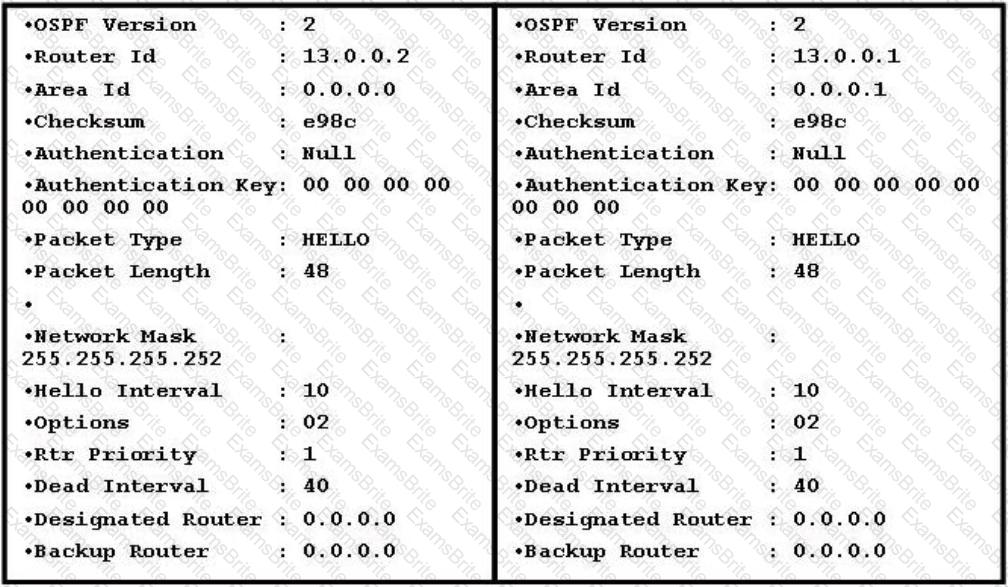
Two neighboring OSPF routers have exchanged the packets shown. What state is the adjacency in?
An Nokia 7750 SR receives a route via an IS-IS LSP with internal reachability, and receives the same route via an OSPF type 5 LSA. If all protocol preferences are default, which route will be installed in the route table?
If a Router originates a type 1 router LSA with the E bit set, what types of areas can it belong to? Select all that apply.
Which of the following conditions will prevent an OSPF adjacency from reaching the full state? Choose three answers.
When redistributing OSPF into RIP V2 what must be taken into consideration for the redistribution to take place?
NSSA LSA packets are what type within an NSSA area, and are converted to what other type at the ABR?
Click the exhibit button.
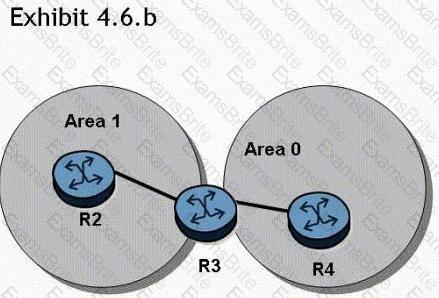
Which of the following would correctly configure routers R2, R3, and R4?
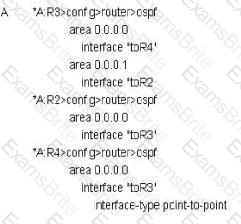
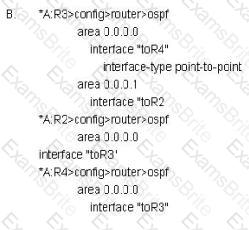
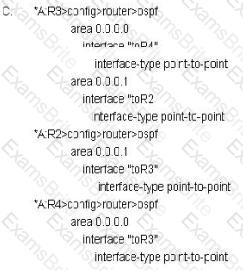
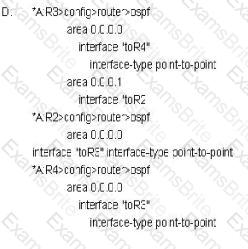
Which of the following statements regarding OSPF routing updates on a multi-access network segment is true?
Click the exhibit button.
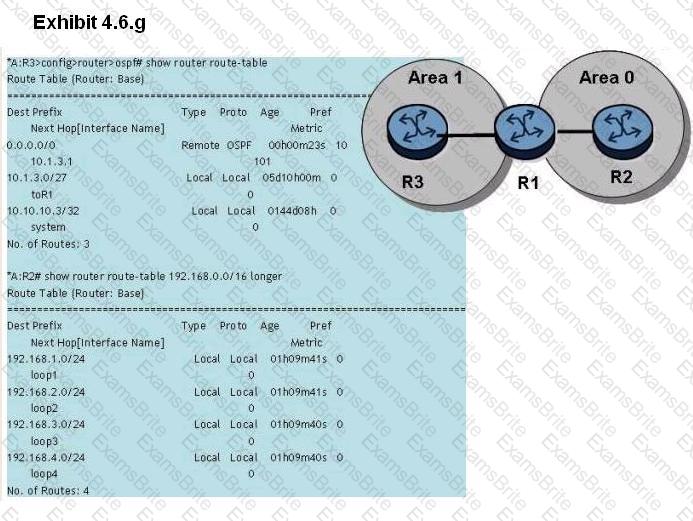
Given the topology and the show commands, and assuming that router R2 advertises all of its loopbacks into OSPF, what is the correct router R1 configuration?
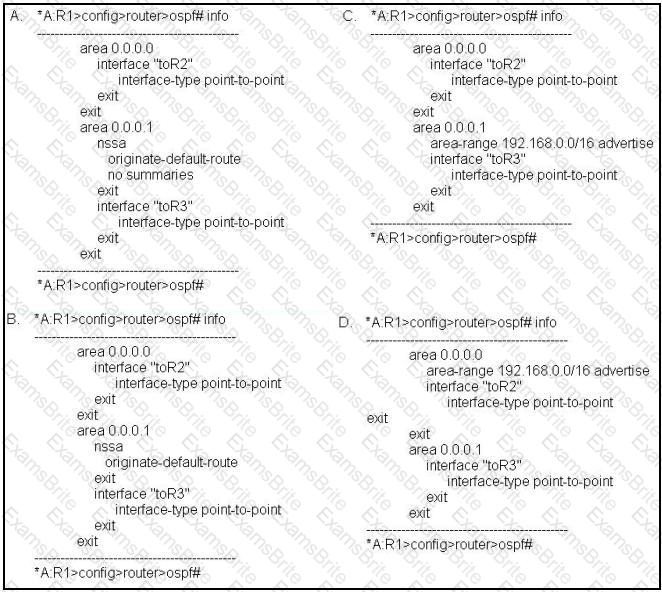
Given the topology and the show commands, and assuming that router R2 advertises all of its loopbacks into OSPF, what is the correct router R1 configuration?
Which of the following statements best describes the function of an OSPF Type 4 LSA?
Which of the following best describes the type of packets used by OSPF routers to exchange updates on a point-to-point link?
Which of the following OSPF area types are supported by the Alcatel-Lucent 7750 SR? Choose two answers.
What is the default preference value for a static route in the Nokia 7750 SR router?
Click the exhibit button.
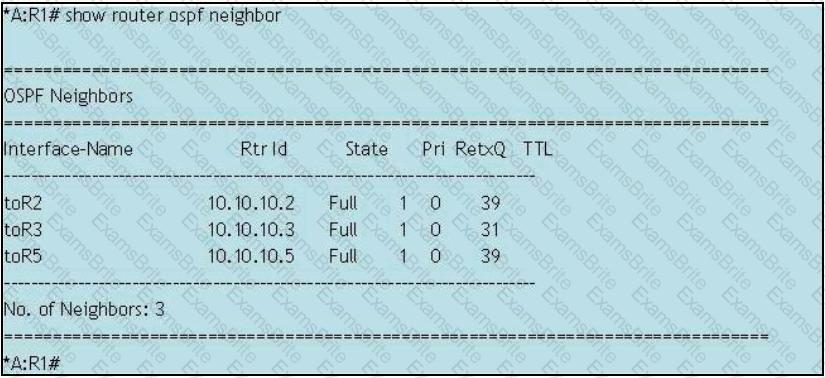
The following command sequence is executed on router R2:
Click the exhibit button.
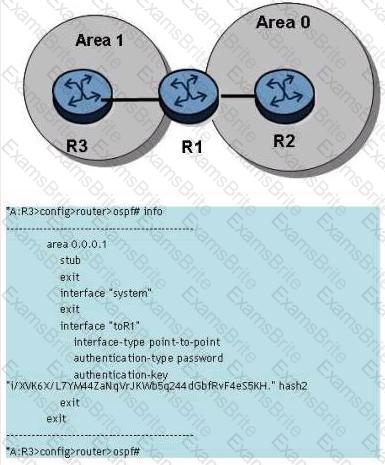
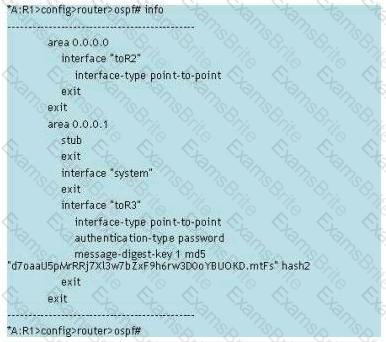
The OSPF adjacency between routers R3 and R1 is down. What is the problem?
In an IP datagram, which of the following fields identifies the receiving application?